September 28, 2021
When I wrote my first official guide to red light therapy a few years ago, red light, AKA “photobiomodulation,” still wasn’t very well known as a training, performance, detox, or recovery tool outside of the fringe biohacking community.
That’s definitely changed.
Nowadays, red light therapy is considered mainstream, standard-practice optimization for many professional sports teams, training clinics, and physicians, and tons of people now use red light therapy in their private homes and gyms.
My work as a so-called “biohacking and fitness expert” has been dedicated to the total optimization of body, spirit, and mind through an approach that honors both ancestral wisdom and modern science. While a red light therapy routine certainly falls into the category of modern science, light as a healing modality goes back to, well, forever—or at least since the sun has existed.
See, light is much more than a wave of energy that signals the absence of darkness. It can have a profound effect on your biology, and, unfortunately, given the likelihood that you're spending much more of your time indoors than your ancestors—not to mention screen time being at an all-time high right now—you're at a higher risk for developing health conditions ranging from sleep disruption to cancer to cardiovascular disease. Sunlight, on the other hand, can be a potent healer, with studies conducted as far back as the 1700s and 1800s demonstrating therapeutic effects on chronic disease, joint pain, gastric inflammation, and more.
I've written about the health risks and benefits of light extensively in the past, and if you want to read up, or give yourself a refresher, you can check out the following articles and podcasts:
- Sunlight Makes You Skinny & Blue Light Makes You Fat: 11 Ways To Biohack Light To Optimize Your Body & Brain.
- Forget Everything You Think You Know About Calories, Eating, ATP & Cellular Energy – How Light Actually Creates Energy In Your Cells.
- The Ultimate Guide To Using Light To Biohack Your Circadian Rhythms, Sleep Better & Beat Jet Lag Forever.
- What Time Of Day Can You Eat A “Cheat Meal,” How Cold Can Make You Unstoppable, Lies We’ve Been Led To Believe About Sunlight & Much More!
- Light As Medicine, Metabolic Typing, COVID Controversies, Polar Bear Fitness, Healing Yourself With Laughter & More With Dr. Leland Stillman.
You can also do a simple Pubmed search for “photobiomodulation” to find literal reams of research on the multitude of benefits of this type of therapy, with Dr. Michael Hamblin probably topping the list as one of the best researchers in the field.
Now here's the deal: while the positive effects of sunlight exposure have been well-documented, there's definitely still controversy and confusion about the benefits versus the risks of skipping the SPF. The confusion is understandable as there has been plenty of hype around the contribution of sun exposure to skin cancer. However, as this article explains, when you look at the research closely, that relationship doesn't really stand on solid ground.
Even if you know plenty about sunlight, you may still be asking yourself how red light fits in. But allow me to explain. Certain wavelengths of sunlight are more beneficial than others, with red and infrared wavelengths—which are delivered in higher concentrations by the morning and evening sun—having the unique ability to boost mitochondrial function. Improved mitochondrial function, which impacts virtually all cellular metabolic activity, has been widely demonstrated to improve health in a whole host of ways—including enhanced muscle recovery, reduced inflammation and pain, better sleep, and better overall skin health. So, red light therapy is a highly effective way to capitalize on the benefits of sunlight regardless of how much time you have in your day and your local climate.
Anyways, in this article, I'll fill you in on the latest research on the health benefits of red light therapy, my current daily red light therapy routine (watch out, it may make you blush), my personal recommendation for red light therapy devices, and tips on how you can set up your red light therapy routine at home.
What is Red Light Therapy?
Legit light therapy products shine specific wavelengths of red and near-infrared (NIR) light on your body using high-quality LED technology.
I’m now closing in on my fifth year of using some form of red light therapy nearly every single day of the year, and it’s still an integral component of my daily training routine.
Back in 2017, before most people had ever heard of red light therapy, I told the world in Men’s Health magazine that “I Put a Giant Red Light on My Balls to Triple My Testosterone Levels.” Since then I’ve been using red light therapy almost every day for a whole lot more than just sexual health and testosterone production, though my routine has changed somewhat over the years (more on that below).
Light therapy—which as I mentioned before is also known as photobiomodulation (PBM)—is a natural, non-invasive therapy that delivers beneficial wavelengths of light to your skin and cells. Full-spectrum light includes many colors, including wavelengths we can’t see, but only a select range of red and near-infrared light is clinically therapeutic for the purposes of PBM.
A high-quality light therapy device uses medical-grade LEDs to deliver clinical doses of light power to your skin, without heat, excess UV rays, drugs, chemicals, or major side effects. Red light therapy has been used in fancy spas and clinics around the world for a few decades, but only in recent years can you buy a device for your own home, and that’s been a huge game-changer. A red light therapy routine works because the wavelengths of red and NIR light react with the mitochondria in your cells. Photons of red light stimulate electrons during the cellular respiration process to create adenosine triphosphate (ATP), an energy-carrying molecule found in the cells of all living things. The more efficiently you can make ATP, the better your body is at clearing inflammation and repairing yourself.
The video below does a great job of explaining how red light therapy works and the specific health benefits of red light exposure.
Why I Use Red Light Therapy Every Day
There are certain things I do for my health every single day.
The most important, bar none, is to tend to my soul—through morning and evening journaling, daily gratitude, reading the Bible, and other spiritual practices.
Getting outside, walking, drinking plenty of water, eating healthy food, cold therapy, and working out are all also part of my day. (I get into detail about those fundamentals in this article.) I'm a big fan of taking those habits to the next level by incorporating biohacking devices whenever possible. For example, I'll use my Hapbee while I nap (as I discuss in this podcast with Hapbee founder Scott Donnell) and I'll imprint my water with healing frequencies with my Infopathy device (lately, before a workout).
Similarly, I work red light therapy into my daily routine because it's a way to optimize what I'm already doing—in the case of red light therapy, it could be while doing yoga, reading in bed, reviewing books, magazines, and articles, making phone calls, etc…
These are some of the most common health benefits you can see from consistent daily red light therapy with a quality device:
- Muscle recovery & physical performance: Bottom line, red light therapy helps me work out harder and faster, with less pain. Red light gets your cells making energy on high octane so you can perform at your peak. It also boosts your muscle gains by stimulating growth.
- Skin health: Red light was originally popular as a skin treatment in fancy spas and salons. Red light is great for your skin for the same reason it’s great for muscles: it boosts ATP energy production in the cells and helps clear out the body’s inflammation. Studies have found light therapy improves skin tone & complexion, diminishes signs of aging, and even can boost your collagen production.
- Better blood flow: Standing in the glow of red light really gets the blood pumping, literally. When your cells take in all those photons of red and NIR light, your tissues are able to use more oxygen and improve the efficiency of your circulation.
- Managing inflammation: One of the primary benefits of red light therapy treatments is a proven anti-inflammatory effect. Inflammation is natural and necessary, but you have to process it and deal with it or it can become chronic and painful. When I’m sore or tired, red light therapy sessions help me control the inflammation and start the healing process efficiently.
Not a bad list of payoffs for a 20-minute routine, right? And it's highly likely that the research will continue to support red light therapy for healing, prevention of disease, pain, and more. Next, I'll get into the latest findings in three areas: hormonal, gut, and cognitive health.
The Latest Red Light Therapy Research
Light therapy has been studied and used to improve human health for over a century.
Way back in 1903, a Danish physician named Niels Ryberg Finsen won the Nobel Prize for pioneering some of the first clinical light therapy treatments.
Finsen used red light to treat smallpox and other light spectrums to address chronic diseases such as tuberculosis. In the decades following, Finsen phototherapy became more developed as a cutting-edge therapeutic intervention in modern medicine.
More recently, in the 1980s, NASA studied red light therapy use in space for health and plant growth. Since then, NASA has continued to work with a Wisconsin-based company called Quantum Devices Inc., the developer of a far-red/near-infrared light-emitting diode treatment called High Emissivity Aluminiferous Luminescent Substrate (HEALS). The HEALS device has proven therapeutic for painful cancer treatment side effects and even the reduction and potential elimination of cancerous tumors.
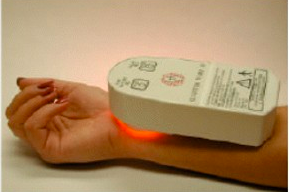 The positive outcomes of treatment with the HEALS led Quantum to design a new, non-invasive medical device called the WARP 10 (Warfighter Accelerated Recovery by Photobiomodulation). The WARP 10—a high-intensity, hand-held, portable LED unit—works for the temporary relief of minor muscle and joint pain, arthritis, stiffness, and muscle spasms, while also increasing local blood circulation. The evolution of light therapy at NASA is indicative of the broader movement from red light therapy as a specialized, relatively inaccessible tool to a home healing mechanism. As device technology improves by leaps and bounds, the scientific research on light and red light therapy has really taken off.
The positive outcomes of treatment with the HEALS led Quantum to design a new, non-invasive medical device called the WARP 10 (Warfighter Accelerated Recovery by Photobiomodulation). The WARP 10—a high-intensity, hand-held, portable LED unit—works for the temporary relief of minor muscle and joint pain, arthritis, stiffness, and muscle spasms, while also increasing local blood circulation. The evolution of light therapy at NASA is indicative of the broader movement from red light therapy as a specialized, relatively inaccessible tool to a home healing mechanism. As device technology improves by leaps and bounds, the scientific research on light and red light therapy has really taken off.
More than 1,000 peer-reviewed studies have been published on red light therapy treatments in the last two decades alone. The biggest consensus across these trials and studies is that red light therapy treatments are safe and well-tolerated by patients, with very few side effects. Some of the most common findings across studies are how red light treatments can increase cellular energy output and reduce a person’s inflammation response, which has shown a large range of benefits for skin, sleep, fitness, recovery, and more. Newer, emerging research is also pushing the boundaries of what red light treatments can do. Below, I’ll talk more about three fields of red light therapy in which the research is developing rapidly.
Newly Researched Benefit #1: Red Light Therapy And Hormonal Health
As I’ve said before, red light therapy is showing a great deal of potential for hormone health.
The thing is, your natural hormone levels start to dip as you get older.
This happens for both men with testosterone and women with waning progesterone and estradiol levels. Even if you stay in excellent shape, those levels dip over time. Every organ in your body, including the adrenal glands, age over time and become less efficient at producing hormones.
So how does shining light on your body help women boost progesterone and men improve their testosterone levels? The short version is that wavelengths of red and NIR light appear to support the mitochondria in the adrenal glands, which are responsible for generating cortisol and adrenaline. They also synthesize dehydroepiandrosterone (DHEA) an endogenous hormone precursor that plays a major role in the production of sex hormones like progesterone, estrogen, and testosterone. DHEA levels diminish with age in both men and women, which results in lower levels of progesterone and testosterone.
In 2019 and 2020, the company that makes the red light therapy devices that I use and recommend, Joovv, partnered with a functional medicine practitioner in Minnesota to conduct a novel hormone health study on the impact of light therapy and a ketogenic diet. In the study, male and female patients tried a 12-week light therapy program using a Joovv Elite (the device I use daily) once per week along with daily in-home sessions with the Joovv Solo. The patients were separated into two groups: people who ate a strict keto diet while using red light therapy and patients who kept a standard diet. This is really the first study to look at how light therapy and diet interact to affect hormone health—and the results were eye-opening.
Women in both groups saw their progesterone levels increase significantly, with the keto group seeing the biggest gains. Pre-menopausal women in both groups also saw significant increases in estradiol levels after light therapy treatments. I’m talking upwards of a 78% increase for younger women, which is pretty incredible. These results suggest light treatments help increase women’s endogenous production of DHEA and progesterone, which could be a game-changer for women who struggle with hormone imbalances.
As for the men in the study, they all saw significant gains in testosterone levels across the board. A few men over 40 actually saw an increase of over 100% in their total testosterone levels. Granted, the participant size was small, but nonetheless, the results confirm that there is solid potential for red light therapy to be a primary treatment tool for hormonal imbalances.
Newly Researched Benefit #2: Red Light Therapy And The Gut Microbiome
Another emerging arena of red light therapy research is how it might improve conditions in the gut microbiome.
Every year, we’re learning more and more about how crucial gut health is for overall health and longevity.
I've written and talked about gut health plenty in the past, including in the following articles and podcasts:
- How To Fix Your Gut: 9 Bad Things That Happen When Your Digestion Goes Wrong, How To Hit The Reboot Button & The Best Way To Detox Your Body.
- 5 Common Myths Surrounding The Human Microbiome (Plus Proven Tips For Fostering A Healthy Colony Of Bacteria Within Your Gut)
- Is A Ketogenic Diet Bad For Your Gut, Should You Eat Resistant Starch, How Exercise Changes Your Gut Bacteria & Much More With Lucy Mailing.
- Why Healthy People Get Broken Guts, And What You Can Do About It.
I’ve been keeping up with recent laboratory research that’s showing how red light therapy can have a potentially significant effect on the gut microbiome. Researchers have demonstrated that red light therapy treatments can alter gut health and help control the body’s production of harmful cytokines during the natural inflammatory processes. That alone can have a huge impact on limiting chronic diseases, from cardiovascular issues to other autoimmune and metabolic problems. (Note that cytokines—which are any of a number of substances secreted by certain cells of the immune system that have an effect on other cells—can be both “good” and “bad.”)
Why does shining light on your body affect the gut microbiome? Researchers believe a potential mechanism of action for light therapy treatments is the reduction of inflammation in the adipose tissue (a central metabolic organ in the regulation of whole-body energy homeostasis) of the abdomen. The anti-inflammatory benefits of red light therapy are already well-established. Research has also shown that light therapy treatments can protect against cytokine “storms”—when an overload of cytokines is released into the body—associated with inflammatory diseases.
Newly Researched Benefit #3: Red Light Therapy And Cognitive Health
The human brain is deeply affected by light intake, particularly in regards to your sleep and circadian rhythms.
Now, new research is also showing how shining red light on your head and brain cells may also improve your cognitive functions like memory and executive function.
A brand-new study published in 2021 shows evidence that the brain can process difficult cognitive tasks more effectively after light therapy exposure. In this recent trial, 33 adults were divided into control and experimental groups, with the experimental group receiving light treatments. The control group did a similar sham treatment (the same procedure but without machine activation). Both groups performed rigorous cognitive tests before and after the treatments to test their working memory and their hemodynamic responses to the work.
The results were extremely encouraging: only the experimental (light therapy) group saw a significant drop in frontal hemodynamic measurements during difficult cognitive tasks. What that means is that after light therapy treatments, people were able to perform difficult tests with less cognitive effort and difficulty. In short, tasks with higher memory loads may be easier to work through after your brain has received specific wavelengths of light.
This study builds on earlier work a few years ago showing how wavelengths of near-infrared light can reach the brain and brain cells and have a significant effect on cognitive abilities, inflammation, and cognitive repair. The authors of this 2016 study outlined how cranial light therapy treatments could be a promising tool to repair brain injury caused by stroke and neurodegenerative diseases.
My Own Daily Red Light Therapy Routine
When I do look back at the thousands of articles that I have written, spanning a nearly boundless number of subjects…
…there are certain articles that have been wildly popular to the point of going viral.
The Ultimate Guide To Biohacking Your Testosterone: 17 Ways To Maximize Muscle-Building, Drive & Anti-Aging. stands out as one of those articles.
Testosterone optimization is a topic that is in demand likely in part because hormonal health has a wide-reaching effect on your quality of life. As I say in this article—Hair, Hormones, Icing Your Balls & 6 Other Little-Known Strategies To Boost Testosterone, Balance Your Hormones & Reclaim Your Rightful Man & Womanhood.—testosterone affects physical and mental virility and, as a result, impact factors such as “emotional masculinity,” namely, the way a man feels about his manliness. In addition, testosterone is also an incredible component of a woman's virility, libido, sexual health, and overall wellness. The primary focus on my current red light therapy routine is my own testicular health, and below, I'll get into the specifics of how I light up my balls daily.
The theory that exposing the testes to light increases testosterone is close to a century old. Dr. In a 1939 study that is considered to be the starting point for the research on light and testosterone, Dr. Abraham Myerson measured initial levels of circulating testosterone in men and exposed their various body parts to ultraviolet (UV) light. After five days of UV exposure to the chest, circulating testosterone increased by 120%. After eight days without additional UV exposure, testosterone returned to its initial levels. When the genital area was exposed, testosterone levels increased by a whopping 200%.
The research is increasingly clear that light therapy has a positive effect on testosterone, but let's face it, it's impractical for most men to hang around outside with their pants down. Plus too much exposure to sunlight can result in sunburn, excess radiation, inflammation, and damage.
When I first got interested in the potential positive effect of red light therapy on testosterone, I did what I always do and delved into the research. According to red light therapy proponents, it works to stimulate ATP production, increase the energy available to the cell, and, in particular, increase the activity of the Leydig cells in your testes. In addition to reading the studies, I contacted my friend, the Finnish physician Dr. Olli Sovijarvi, whom I consider to be an expert in all things testosterone and sperm-count related. What Dr. Olli told me was that since those initial studies, many more studies have investigated the effects of direct sunlight on the torso, which increases a human male's testosterone levels by anywhere from 25 percent to 160 percent, depending on the individual. He also told me that he hugs a long panel of red infrared light from an LED source at 600 to 950 nm after pulling his pants down each night.
I was convinced.
Dr. Olli recommended the device he used, from a company called Joovv, and I decided that if I was going to go for it I might as well go all in, so I shelled out the big bucks for the full-body LED red light therapy device.
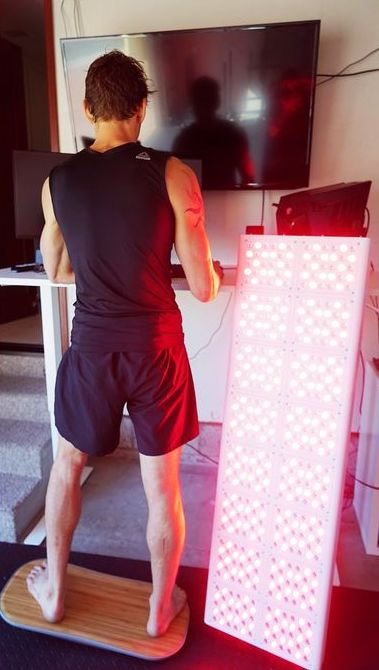 When my Joovv arrived, I hoisted it downstairs to my office, leaned it against my stand-up desk, pulled down my pants, and flipped it on.
When my Joovv arrived, I hoisted it downstairs to my office, leaned it against my stand-up desk, pulled down my pants, and flipped it on.
Holy hell.
Not only was the red light panel itself as wide as my torso and nearly five feet tall, but the light coming off this thing was freaking blinding (causing me to jump back as best I could with my underwear wrapped around my ankles). I fumbled for the little sunglasses that were included with the light panel and slapped them on, which helped, though I later learned that sunglasses aren't necessary and that this form of light can actually be therapeutic for the eyes. My concerns with the strength of the light were legit, as many types of lamps and bulbs sold for red light therapy—such as incandescents, heat lamps, and infrared lamps—give off a significant amount of heat and can actually fry your testicles, so you've got to be careful.
I did five minutes that first time, then later did eight minutes, then finally got up to 20 minutes. Dr. Olli says 5-20 minutes is the sweet spot, which may qualify red light therapy as the most time-efficient biohack in your arsenal. Let's just say that the sexual payoff for warming up my crotch with a red light bath was significant (for all the details, you'll have to read Boundless).
Now, every morning after I make my morning cup of coffee, mushroom tea, cacao hot chocolate, or whichever other crazy brew I'm drinking that day, I go downstairs and do a full-body infrared treatment. For my head, I use a Vielight, a photobiomodulation device that enables light energy to penetrate the cranium through transcranial and intranasal pathways to reach and stimulate the brain. I alternate between the 10 Hz alpha and the 40 Hz gamma, activating the activity of the mitochondria and the neural tissue. To learn more about the Vielight, you can listen to my podcast with the inventor of the device, Dr. Lew Lim. And the video below is a good overview of how Vielight works.
So, with the Vielight on my head, I strip off all of my clothes and I put one of the Joovv panels in front of me—for that, I use a shorter setup that allows my head to still be over the top of that front panel—and then I put the back panel behind me. I have friends who will put the panel in a broom closet, hang it on a wall, or put it in a gym, then will stand and do 5-10 on one side, then turn around and do 5-10 mins on another. Because I have two panels now, I sandwich myself between two units. With Joovv's red light therapy devices, more time is not better—they're super strong and effective, and I do a maximum of 20 minutes while I'm drinking my coffee and reading articles (it's much more efficient than other red light devices that require like an hour of treatment!).
How I Travel with Red Light Therapy
I get around for work and competitions, but I don’t like breaking up my red light therapy routine.
That’s why I always travel with a Joovv Go 2.0, a handheld light therapy device I can slip in a suitcase and charge at my hotel.
Like I mentioned earlier, I made waves with my Men’s Health article about shining red light on my junk, but with the full-body unit, it wasn't quite as convenient to get full coverage on my man parts. The Joovv Go can target whatever body part you want to treat, and as a bonus, it comes with Ambient mode and a nice alarm clock feature that lets me wake up to calming red light instead of an annoying phone alarm.
I use the Joovv Go when I travel or when I want to do a spot treatment. It's similar to the cold laser treatments that you can get for a lot of money at the doctor's office, but way more budget-friendly. Not to make anyone blush, but I also will sometimes because of the effects of infrared light on testosterone production in males if shone the gonads. If I'm reading in bed at night or in the morning I'll tuck it between my legs and turn it on for sexual health and hormonal health. It works quite well for introducing blood flow to that area. For any guys in there (nudge, nudge, wink, wink) works before date night. Flip it on every morning. That's the main way that I use it. For health club owners, I have seen them put one on each wall of the broom closet (entrepreneurs, etc. cool add-on feature).
The video below gives you a look at the Joovv Go 2.0, which has a sweet design in addition to being portable and affordable. I also just received the latest Joovv system, the 3.0 models, which are even lighter and more powerful.
The Joovv Red Lights I Personally Use
Since that first foray into red light therapy, I have continued to rely on Joovv devices for my at-home red light therapy.
(That's me on the right with my sweet new 3.0 model.)
Joovv makes the largest in-home devices with the broadest coverage areas, which means I can treat more of my body at once to maximize results. Here are four more reasons that Joovv is the only red light therapy company that has my full recommendation:
- Quality and safety: I’ve looked into Joovv’s manufacturing processes and I know their devices pass stringent safety testing conducted by independent third parties. If you do some diligence, you’ll quickly realize that most of the other red light therapy products on the market are not designed for human use. Unlike Joovv, they don’t pass any rigorous safety testing either. I don’t know about you, but standing naked in front of LEDs that have never been tested or certified for at-home therapeutic use isn’t the best idea.
- Power: I’ve seen a lot of nonsense from other red light therapy companies claiming their devices deliver more and more power under the premise this will yield better results. Here’s the deal: you don’t want your light therapy devices to deliver excess power because of something known as the biphasic dose response, which is sort of like the law of diminishing returns. The Joovv engineering team designed their devices to deliver the sweet spot when it comes to optical power and total energy dosage. After using their gear for a handful of years now, Joovv devices are not only safe, but they’re incredibly effective.
- Design: As someone who’s owned every generation of Joovv, they’ve set the bar very high with their newest devices. Everything has been upgraded across the board including the panels themselves, which are lighter and much easier to connect to one another. The new pole mount system makes it very easy to mount a Joovv at your desired height. Plus, there's a new boot floor stand that allows you to set up a Solo device virtually anywhere.
- Custom modes: No other red light panel comes with as many features as Joovv. The two I’m most excited about with their latest generation of devices are Recovery+ and Ambient modes. Recovery+ mode is a pre-configured setting that I use after workouts to optimize muscle recovery. This unique feature uses pulsed NIR wavelengths at 10 Hz to penetrate deeper into the muscle tissue, which helps stimulate healing and tissue regeneration (more on that science here). Cells that are under stress respond more favorably to pulsed light because they get a brief quench period, which allows them to briefly reset, helping to further combat oxidation and inflammation. It’s sort of like how short, intense bursts of exercise over time can be more effective than long bouts of continuous exercise. In my experience, a full-body Joovv with Recovery+ mode is the best way to use light therapy for training and post-workout recovery. I have already talked about how bright blue light can disrupt your sleep cycle. Red light is a better choice at night, and Joovv’s 3.0 generation of devices includes Ambient mode for nighttime lighting. Once the sun sets, I use Ambient mode to fill my home with low-intensity red light. It’s great for reading or hanging out before bed, and it can actually help prepare your brain for better sleep.
As more and more research is published demonstrating the health benefits of red light therapy, there are of course more and more devices appearing on the market. I encourage you to do your homework on safety and efficacy before investing in a red light therapy device. The risks of a low-quality product can range from questionable results to, as mentioned before, genital frying (yikes). While Joovv may not be the only option for high-quality red light therapy, it is the only brand that I can recommend right now as I've subjected it to my own standards—and if you know me, you know those standards are about as high as you can get.
Summary
In my recent book Boundless, I reveal a host of proven, practical approaches to increasing both healthspan and lifespan, most of which rely on a potent combination of ancestral wisdom and modern science.
Red light therapy is one of the coolest (or should I say hottest?) mash-ups of this type of “old and new” combination, with the health benefits of light being recognized for centuries and today's devices making light therapy affordable and convenient. The latest studies on red light therapy continue to support decades-old findings that demonstrate the therapeutic and preventative effects, with benefits to hormonal, gut, and brain health at the forefront of the research.
Here's another quick overview of the reasons that my red light therapy devices of choice are from Joovv:
- Joovv's devices pass rigorous quality and safety tests performed by independent third parties.
- The power delivered by Joovv devices hits the sweet spot for maximum effectiveness without frying anything. :)
- Everything that Joovv designs is of the highest quality, from the panels to the mounting gear, and they look pretty cool, too.
- Joovv panels feature custom modes not found on other devices, including Recovery+ mode for training and post-workout recovery, and Ambient mode for improved sleep.
Hopefully, this article has helped to illuminate (heh) the many health advantages of incorporating red light therapy into your daily routine. If you can make red light therapy a habit along with regular sun exposure, your lifespan and healthspan will benefit significantly.
How about you? Do you have a red light therapy device at home yet? If not, is uncertainty about the effectiveness, cost, or another factor holding you back? Leave your comments, questions, and thoughts below. I'd love to hear from you.

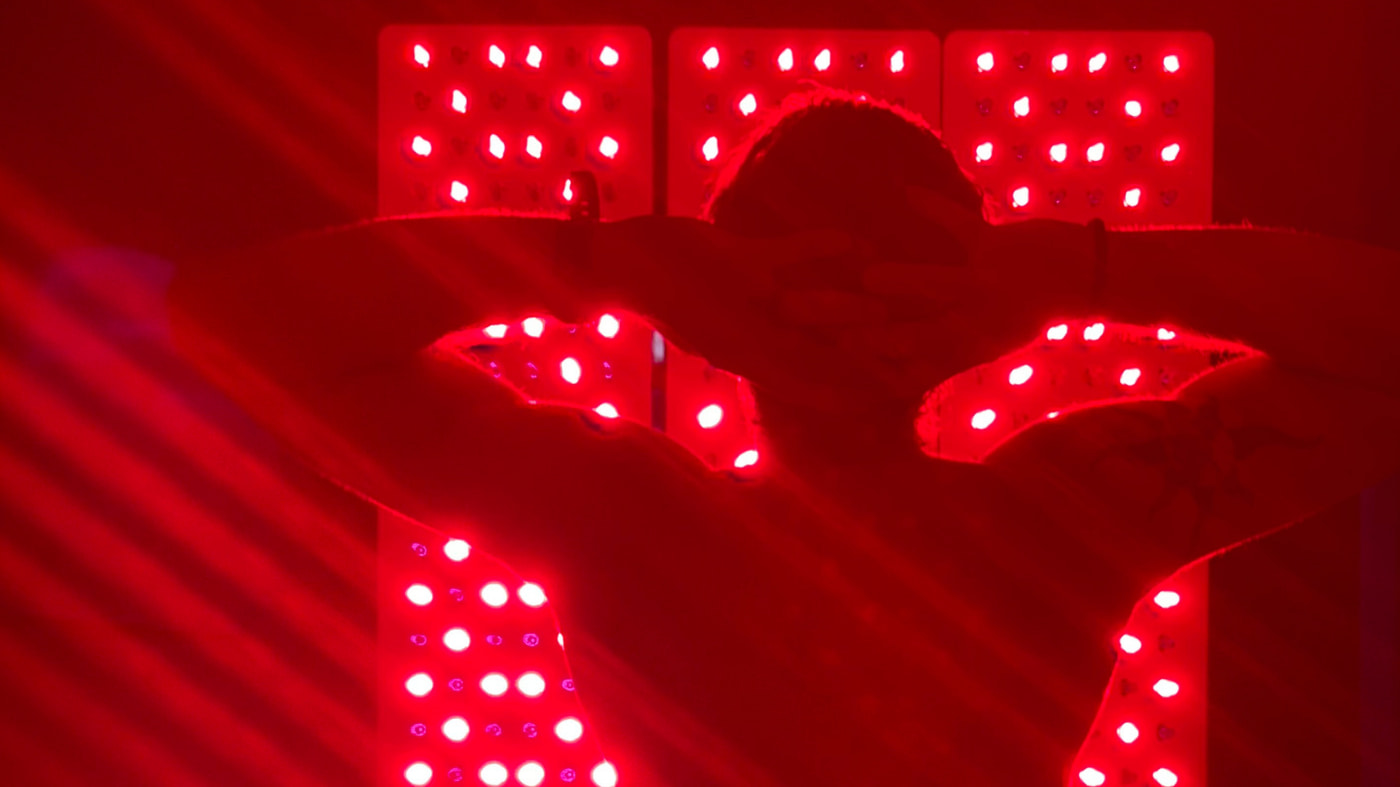


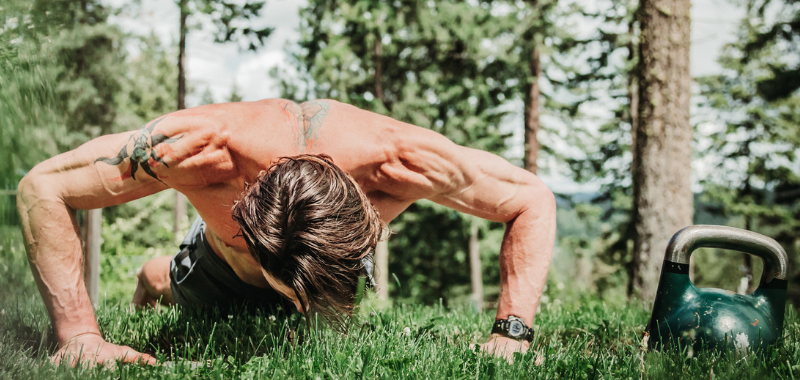



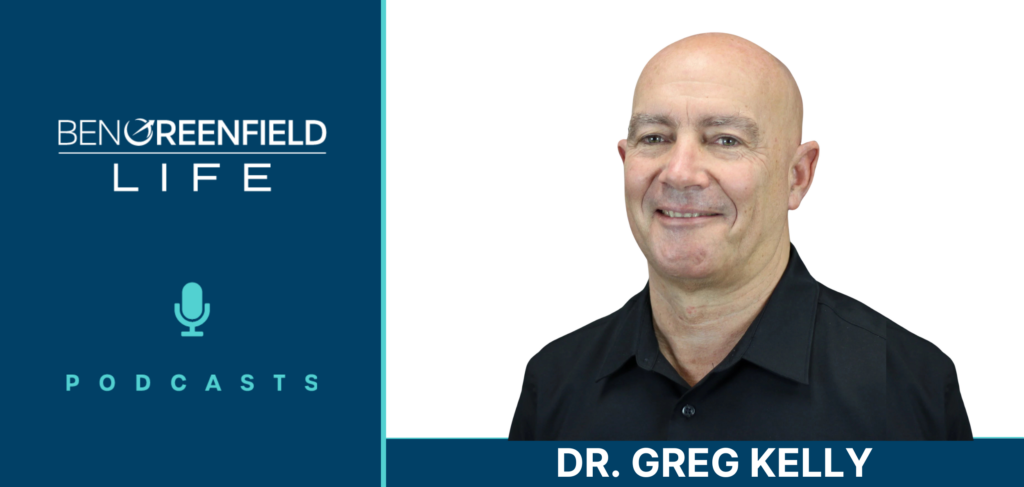






Any other red light devices you recommend, more affordable alternatives to Joov?
I’ve had my Joovv lights since 2019.
I love how I feel after 20 minutes of exposure every day!
I saw significant healing in both my shoulders following major rotator cuff,
ligament and tendon repairs. The surgeon and physical therapist were amazed how well I healed and how much movement I regained; despite the fact they dismissed the joovv as “woo woo med”.
I used it on my dog after 2 knee repairs. She is back to 100%.
I use the lights daily for 10 minutes on the front of body and the back.
I was wondering if the lights feed the mitochondria in my brain as well as it does on my body?
Is JOOVV still your go to? I am finding conflicting research in my search to choose the best device.
Yes, I can’t recommend a Joovv more highly — bengreenfieldlife.com/joovv (Save $50 with code BEN)
Are there any discounts on Joov if I mention you?
Thank you.
Go to BenGreenfieldLife.com/joovv and enter your email address to get an exclusive discount on your first order.
I tried to use that email ..says email wasn’t recognized
[email protected]
I bought a single 2.0 panel and then you upgraded thus making not compatible to expand my system
Not happy due to the fact that I am not rich and cannot afford keeping up with your product
Too bad, was looking forward too expanding
Besides that, I love the results
Any efficacy behind research suggesting NIR on genitals can be damaging and to instead just use the red light function on the joovv for genitals?
Following….I put 6- 250 watt Therabulbs in my shower and yes i turn around when my testicules get warm. Hope I’m not damaging anything
I noticed that pulsing function exist on the 3.0. What is its use and who specifically could benefit. I have chronic inflammation due to autoimmune. My mid-sections impacted by the inflammation. Looking for a methodology to reduce overall inflammation. Is pulsing a way to increase absorption/saturation thereby increasing effectiveness? Any and all help is appreciated. Regards.
I noticed the article mentions Vielight for the brain. Does the Joovv not work on the brain —- to reduce brain inflammation? Does Ben still recommend Vielight as a compliment to the Joovv?
According to the Professor who has been studying Photobiomodulation….the Vielight does not work because the NIR enters the blood stream so you lose the effect on the brain ramming the tube up your nasal cavity.
He states what he does is just sticks his head on the box once a day for a few minutes….and it will penetrate the brain with out all the expense.
I have one Solo 3.0 and Mini 3.0. How would you maximize their use?
Hi,
I am 70 and have an “implanted cardio defibrilator”as I have venticular tachicardia.You reckon it will be safe to use and will it be benifical at my age.
Regards Dani
Hey There,
We recommend consulting with your doctor first.
– Team Joovv
icing or red light therapy or both ?
protocol ?
Hey there,
Here is a great article regarding icing.
https://joovv.com/blogs/joovv-blog/injuries-ice-vs-red-light-therapy
-Team Joovv
Hello
I have a question on using a RLT device in winter on the northern hemisphere (northwest europe).
Isnt it “out of season” and therefore strange for your body to use a red light device in winter?
The strong light signals from the device will not be complemented by strong sunlight during day? Isnt that a circadian mismatch (as dr jack kruse sometimes calls stuff).
Hope to hear from you. Thanks! Best regards. GJ
Hey there,
Use your Joovv when it works best for you! Some people love how it feels in the morning and say it perks them up for the day. Others wait until before or after a workout for max energy and recovery. And many use Joovv at night, or as an alternative to bright, artificial lights after dark. The important thing is fitting red light therapy into your daily routine, regardless of what time.
-Team Joovv
Are there explicit advantages to utilizing the Joovv at specific times? I’ve seen certain individuals raise a couple of circadian contemplations.
Hey there,
Use your Joovv when it works best for you! Some people love how it feels in the morning and say it perks them up for the day. Others wait until before or after a workout for max energy and recovery. And many use Joovv at night, or as an alternative to bright, artificial lights after dark. The important thing is fitting red light therapy into your daily routine, regardless of what time.
-Team Joovv
why not just DIY it with some grow panels easily purchased off Amazon that typically provide 660 and 850 nm light and are way less expensive?
Hi there,
Good question, Amy!
There is actually a lot that goes into designing and manufacturing a safe and effective red light therapy device.
Here is a helpful article that dives into the details.
https://joovv.com/blogs/joovv-blog/what-makes-at-home-red-light-therapy-devices-safe
I hope this is helpful.
-Team Joovv
How many times a day you would recommend using red light therapy?
Hi there,
To get the most out of your Joovv, consistency is key. We recommend once daily use, although 2-3 times per day may be beneficial for symptomatic areas. If doing multiple treatments per day, we recommend keeping them 6 hours apart.
– Team Joovv
Are there specific benefits to using the Joovv at certain times of the day? I’ve seen some people raise a few circadian considerations.
Can you explain the biomat, does it provide heat as well?
What are your thoughts of MITO RED’s Vitality Booth? It combines with Halo Therapy?
Been using my Joovv for over a year now, it does everything you say it does. I’m fortunate that I work from home so I can do it first thing in the morning, 20 minutes on either side during the day and right before bed at night. Fantastic device and one of the best out there, highly recommend.
Do you get red light therapy from a clearlight infrared sauna?
Hi there,
Here is a great article that dives into the differences between Photobiomodulation and Saunas.
https://joovv.com/blogs/joovv-blog/saunas-versus-light-therapy-photobiomodulation-pbm-key-differences-practical-considerations
– Team Joovv